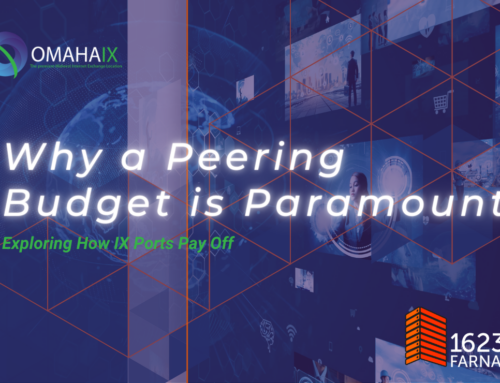With more than 5 billion internet users worldwide and more than 25,000 independent systems moving traffic across the world wide web, the “information superhighway” can often seem more like a narrow country lane clogged with frequent backups and occasional gridlock. Every minute, Americans alone generate more than 3.1 million GB of internet traffic. In 2021, 306 billion emails were sent every day — and that number is expected to jump to more than 333 billion in 2022.
Now consider that much of the global population has been confined to their homes due to the global pandemic, spending their days working, shopping and entertaining themselves online. And since the pandemic shows few signs of abating, these eye-popping numbers are only expected to grow in the coming year, adding to the already mind-boggling congestion.
It makes you wonder how internet traffic moves at all.
Thankfully, there is an alternate (read: more effective and cost efficient) route around this crowded cyberspace. It’s called peering, which simply means linking two or more networks directly through an internet exchange point like Omaha IX. Peering can help reduce transit costs, increase bandwidth capacity, improve network performance and give you greater control of your traffic flow.
With a typical network connection, most commonly known as a transit connection, you hand your data off to a third party who acts as sort of internet traffic cop, deciding how and when your data will be transmitted to the end-user across the internet. This can be costly (since you pay a transit fee), and it’s especially problematic during periods of high traffic volume when your data could be delayed or even lost. Peering eliminates those concerns and ensures your traffic gets to where it needs to be quickly, securely and seamlessly — with no unnecessary middlemen.
Peering is a broad term that can refer to a number of different arrangements. The most common form is often called public peering and involves connecting with one or more network partners via an Ethernet switch at an internet exchange point. Public peering agreements can be negotiated to meet the operational and technical requirements of each partner in the shared network arrangement. Usually, these requirements include an Autonomous System Number, frequently referred to as ASN – a unique identifier that allows an autonomous system to exchange information with other systems worldwide – one or more blocks of public IP addresses – unique identification codes used to locate a device on the internet or on a local network – and a network edge router capable of running Border Gateway Protocols, or BGP – which allow the internet to exchange routing information between autonomous systems. Importantly, the initial cost of a public peering is low since no new cabling is required.
Omaha IX offers both bilateral and multilateral peering through a Shared VLAN configuration. With bilateral peering, the peers establish BGP sessions directly between their respective routers. In a multilateral peering configuration, the route server reflects the route to all other server clients, enabling others to join the shared network.
In a private peering arrangement, two networks connect their individual routers at a colocation facility using a direct cable rather than an Ethernet switch. You might choose this option if you share a large amount of traffic with a specific partner.
Omaha IX offers Private VLAN peering on a dedicated VLAN rather than a shared VLAN. The VLAN can have two or more associated ports, limiting connections to only those you choose to peer with.
The shortest distance between two points is a direct line. Peering is that straight line, providing you with a true internet superhighway – a dedicated, direct connection that ensures your critical data gets where it needs to be quickly, seamlessly, and safely.



